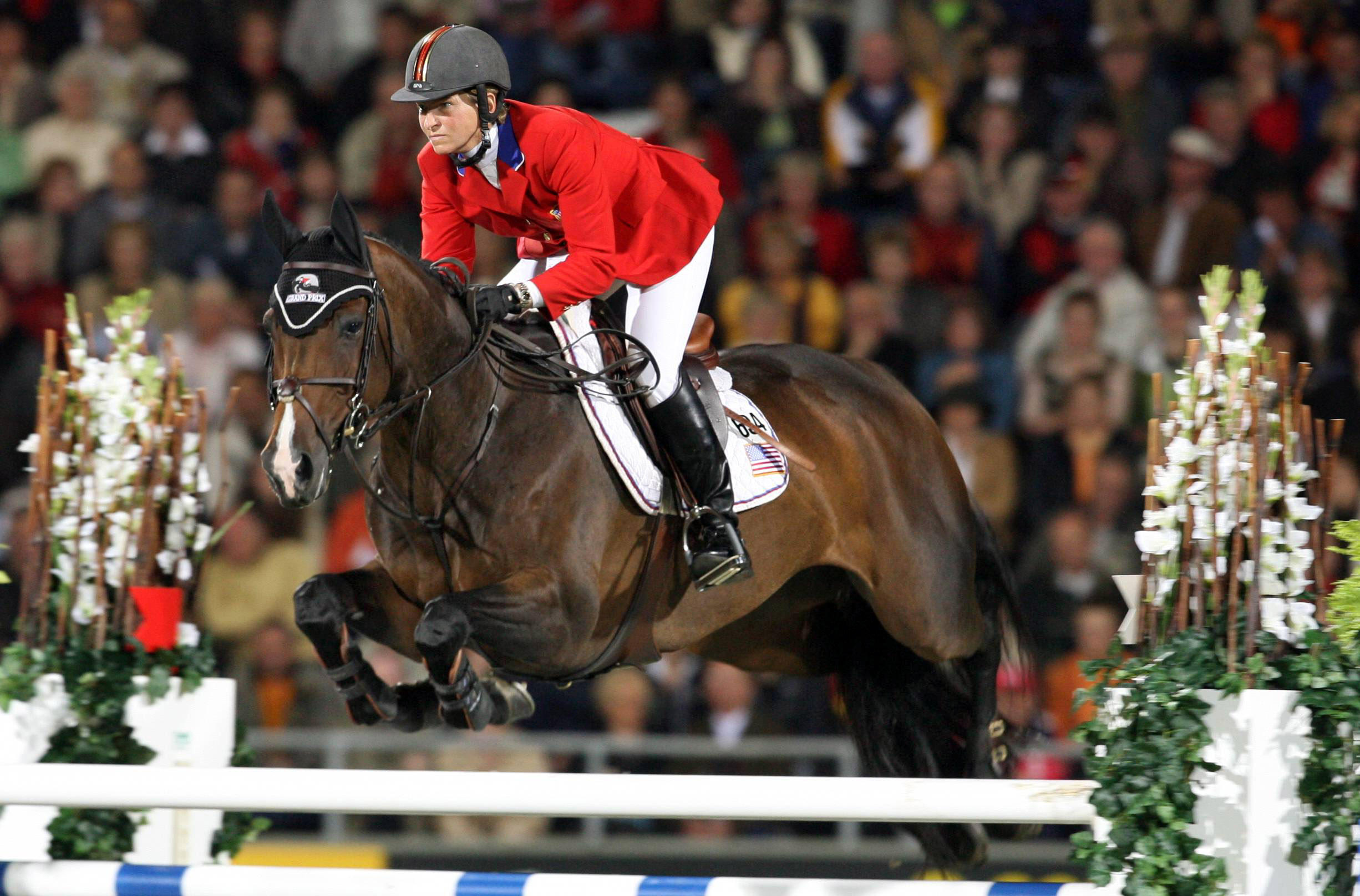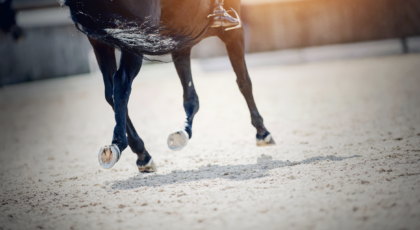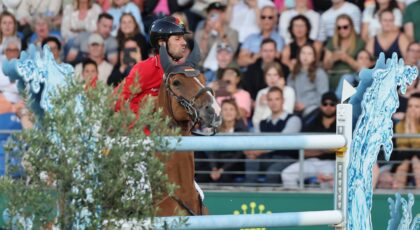Today, the name ‘Authentic’ is synonymous with the three Olympic medals he and rider Beezie Madden brought home to the USA between 2004-2008.
What’s lesser known is the fact that the first of those medals very nearly didn’t happen.
Back then, in the spring of 2004 and at just 9 years of age, the Dutch warmblood gelding was considered to be one hot ticket. At the close of the six Olympic team qualifiers that season, he and Beezie had scored at the top of the pack alongside teammates Peter Wylde and Fein Cera, McLain Ward and Sapphire, and Chris Kappler and Royal Kaliber. But even then, Authentic was in a class all his own.
The year before, as an 8-year-old, he’d had an impressive run in the European indoor circuit, culminating with a win at the Stuttgart Masters. In April of 2004, he placed second at the $200,000 Budweiser American Invitational—then one of the year’s biggest classes.
Despite his young age, by the summer of 2004, Authentic had banished any concerns that John and Beezie Madden—then 39—might have had about his ability to perform in Athens, Greece, on the world’s biggest stage. Then, disaster struck.
The night before the jog for the first Olympic speed competition, the Maddens realized that Authentic was colicking.
It’s a diagnosis that drives fear into the heart of any horse owner, regardless of when it happens and how severe the case may be. But for Authentic, on the eve of both his and Madden’s Olympic debut, colic presented an especially terrifying catch-22.
Given FEI rules, pain medications such as Banamine could not be used to treat Authentic if he still planned to compete. As a natural next step, the Maddens requested an FEI medication exemption, but were denied.
Of course, they could treat Authentic with anti-inflammatory medications and anything else he needed, the governing body said, but he wouldn’t be allowed to jump for his country that week.
The vets began administering a steady stream of fluids into the gelding’s system, a process he would barely stand still for. But it was the only course of medical intervention allowed by competition standards. Colic surgery was discussed as an emergency option. The minutes ticked by.
One of the vets administered a rectal exam and could palpate the issue in the Authentic’s intestine. Another option was floated: Let the gelding roll and see if the kink in his intestine resolves on its own. It was a last-ditch effort, but the best one they had available.
Beezie was willing to give it a go. If it failed, they would medicate, and failing that, operate. The Olympics could wait another four years, she hoped. But this last measure was worth a try.
They led Authentic over to a sand pit and let him roll—which he did, all the way over. He passed a lot of gas, then stayed down where he was. To the relief of everyone watching, Authentic, now relieved of his burden, eventually closed his eyes. He began to enjoy himself, basking in the warm, Hellenic sun.
Two days later, he jumped his first speed round in the Olympic Games, finishing clear and fast to tie for first place. Two clear Nations Cup rounds followed in the days to come, earning Team USA their first gold medal in two decades.
Authentic became the top qualifier going into the individual final, where he had an uncharacteristic 12 faults. No matter. Four years later, Authentic and Beezie would right that wrong in Beijing, taking home not only their second, consecutive, team gold, but the individual bronze medal as well.
A single horse earning back-to-back golds is a feat that’s only been replicated three times in Olympic history, and never by an American mount. Not to be a one-hit-wonder, Authentic would also earn back-to-back wins on the grass in the prestigious ATCO Queen Elizabeth Cup at Spruce Meadows. He earned team and individual silver medals at the 2006 World Equestrian Games in Aachen, and he and Beezie won the Rolex Grand Prix of Aachen the following year.
But aside from merely making history, Authentic—or “Bud” as he was known in the barn—was unique for a host of other reasons. According to Madden, he had a kind of unmatched athleticism; this, despite a somewhat downhill-feeling balance, and the fact that he seemed to “just pop into the air” over jumps.
His secret weapon? Versatility.
“I think he probably has the most ability of any horse I’ve had, if you combine the scope, carefulness, and athleticism,” Madden told The Chronicle of the Horse in 2005. “He does a lot of different things to get over a fence; he’d not stuck in one style.”
Bud was intelligent and inquisitive about new things, according to John Madden, but rarely spooky. When he wasn’t fearlessly clearing 5-foot tracks, he loved a flat-out nap. But he also had plenty of personality in the barn. “He’s like a little kid to have around,” said his faithful groom, Clark Shipley, in a farewell video from his retirement in 2009. (Shipley predeceased Bud, passing away from cancer in 2020.)
In his later years, Bud was a popular fixture at ‘Madden Mountain,’ the Madden’s training stable and retirement facility in Cazenovia, New York, where he routinely took the weanlings under his wing. He passed away this week at the age of 30, having spent nearly 25 years under the Maddens’ care.
“He’s one of the cockiest horses I’ve ever dealt with. He likes to do things his way,” Beezie Madden has said, a categorization that rings true of the gelding’s larger-than-life career from start to finish.
“I hope he’s remembered as being one of the greats in the sport,” she said, “particularly, for shining in the right moment.”


 April 11, 2025
April 11, 2025 

























